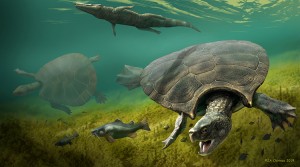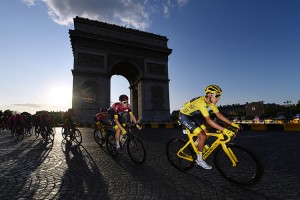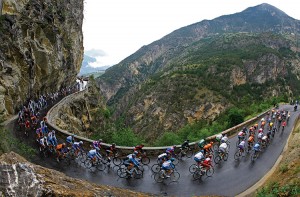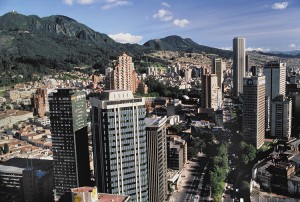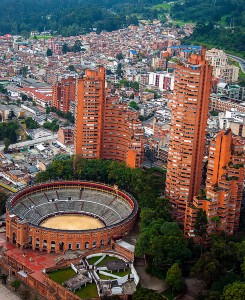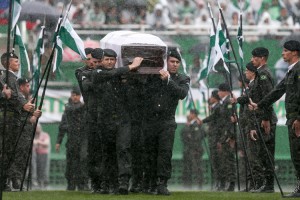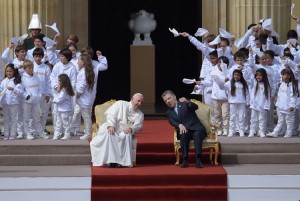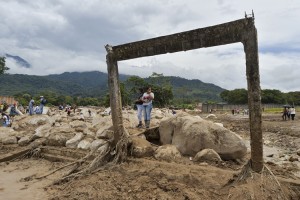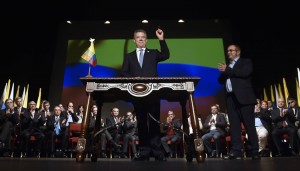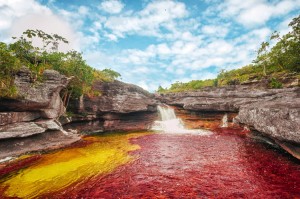Remembering Colombian Artist Fernando Botero
Monday, September 18th, 2023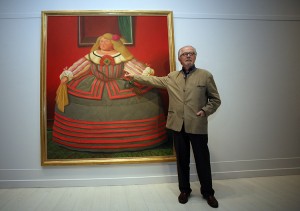
Colombian artist Fernando Botero with his painting ‘After Velazquez’ at the Pera Museum in Istanbul, Turkey, on May 3, 2010.
Credit: © Prometheus72/Shutterstock
Copy the Mona Lisa, but make her twelve years old and comically disproportionate! Political, original, and always interesting, Colombian artist Fernando Botero’s pieces captured attention around the world. Botero died on Friday, September 15th, 2023, at the age of 91. Botero was known for his paintings and sculptures. Round figures with comparatively small faces define his work. Botero featured satirical portrayals of powerful subjects. Satire is the use of wit to attack human conduct or institutions. Satire is used in literature and art to expose and even reform such human failings as folly, greed, or vanity. His style, known as Boterismo, shows figures of exaggerated volume with bright colors. Botero painted and sculpted animals, people, and still-life scenes of food. Still-life paintings are close-ups of objects.
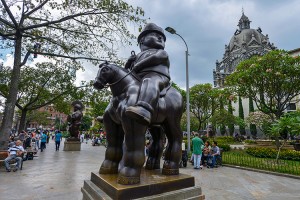
‘Horse Man’ sculpture by Colombian artist Fernando Botero in Botero Square in Medellín, Colombia.
Credit: © Oscar Espinosa, Shutterstock
Botero was born in Medellín, Colombia, on April 19, 1932. His father died when he was four years old. Botero began drawing and painting in watercolors at a young age. An uncle enrolled him in a training school for bullfighting when he was 12 years old. A man who sold tickets to bullfighting began selling Botero’s drawings and paintings. At the age of 16, Botero’s first illustrations were published in El Colombiano, a newspaper in Medellín. When Botero was 20 years old, he won second prize at Bogotá’s Salón Nacional de Artistas exhibition. He then traveled to Europe to study art.
Botero studied the paintings of the Old Masters of European art in Madrid, Spain; Paris, France; and Florence, Italy. After he returned to Colombia, he entered the Biblioteca Nacional exhibition in 1955, where his art was not well received. Botero moved to Mexico City in 1956. In 1960, he won the Colombian section of the Guggenheim international exhibition. That same year, he moved to New York City. In 1961, the Museum of Modern Art in New York City bought his painting Mona Lisa, Age 12, a tribute to the Old Masters.
In 1973, Botero moved to Paris, France. While in Paris, he began sculpting figures from his paintings. Museums and galleries around the world featured Botero’s work as his popularity grew. Botero’s bronze sculptures are displayed in public spaces in Colombia, France, Israel, Spain, and the United States. Botero addressed the subject of the Colombian drug cartel in Masacre de Mejor Esquina (1997) and Death of Pablo Escobar (1999). He addressed the abuse of Iraqi prisoners by American personnel in Abu Ghraib prison in a collection called Abu Ghraib (2005).


